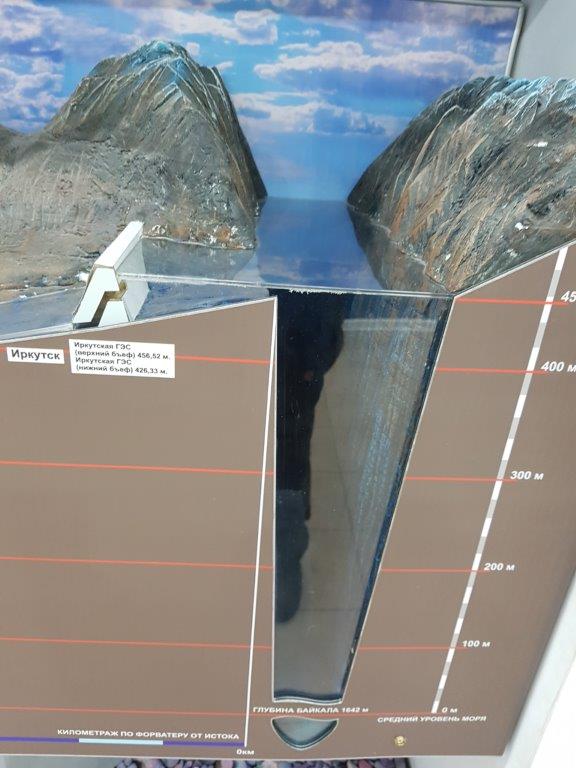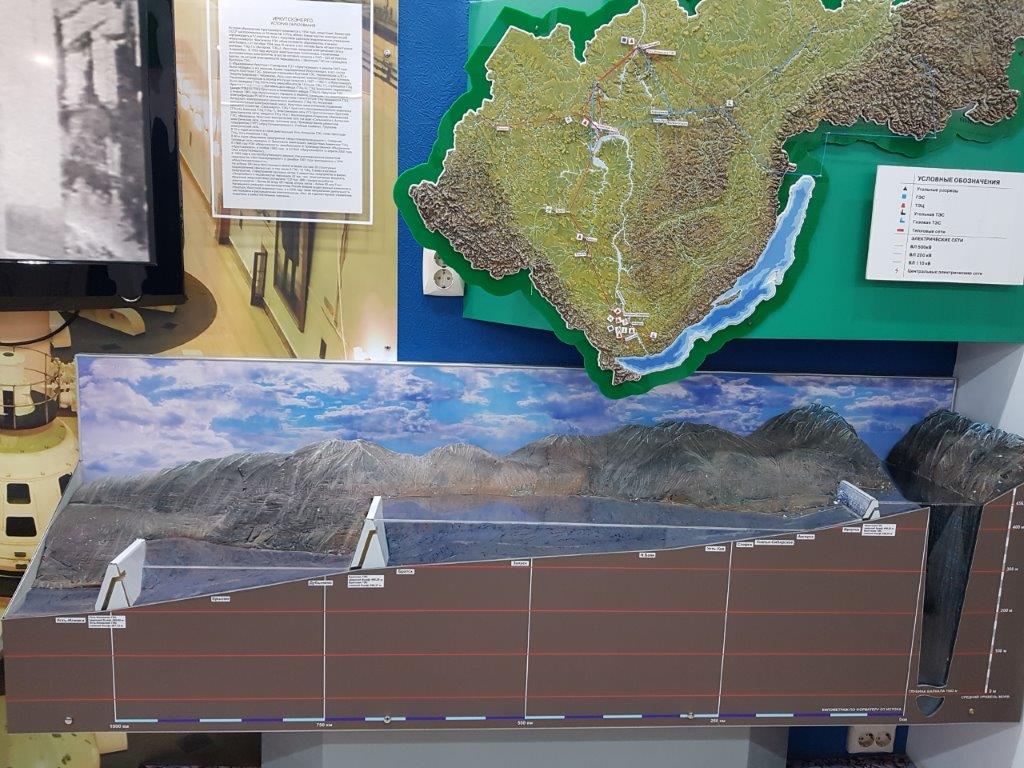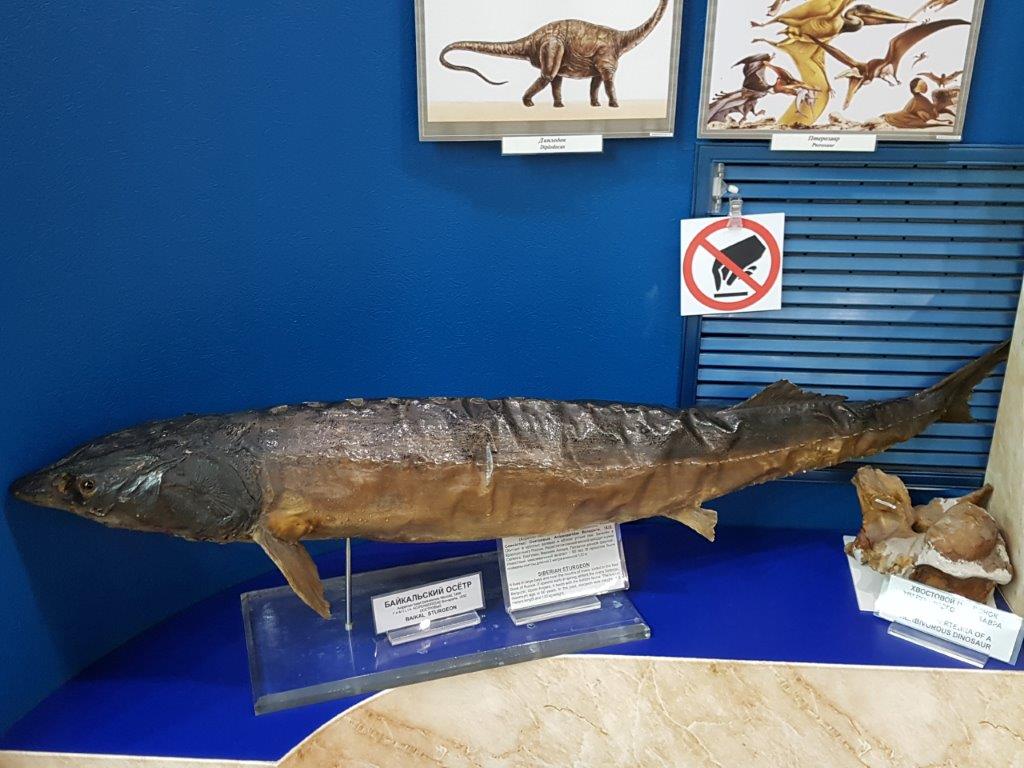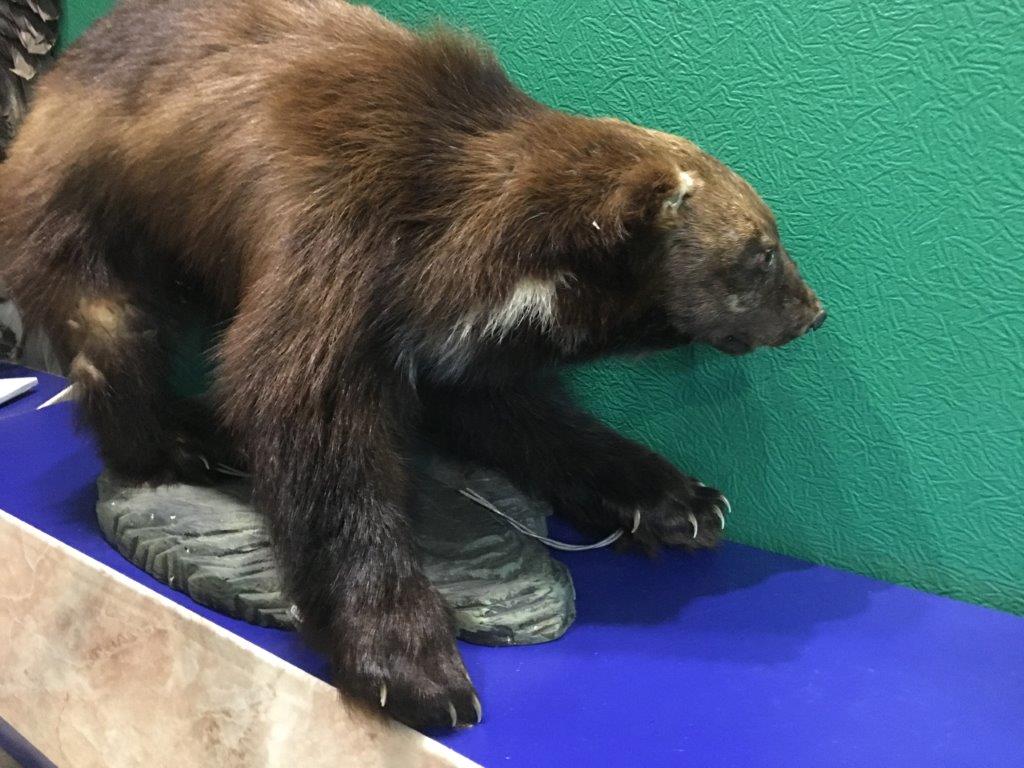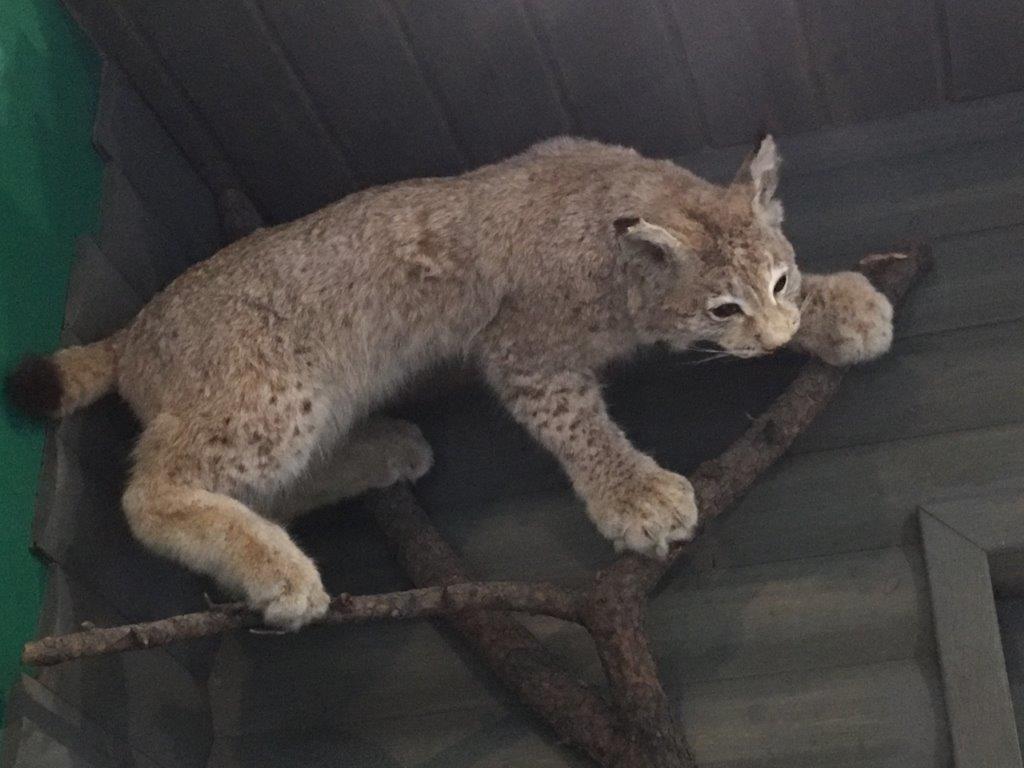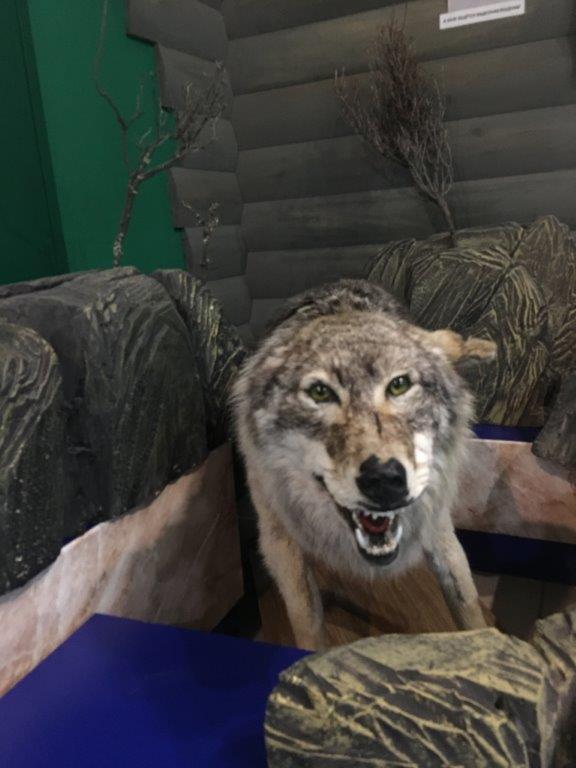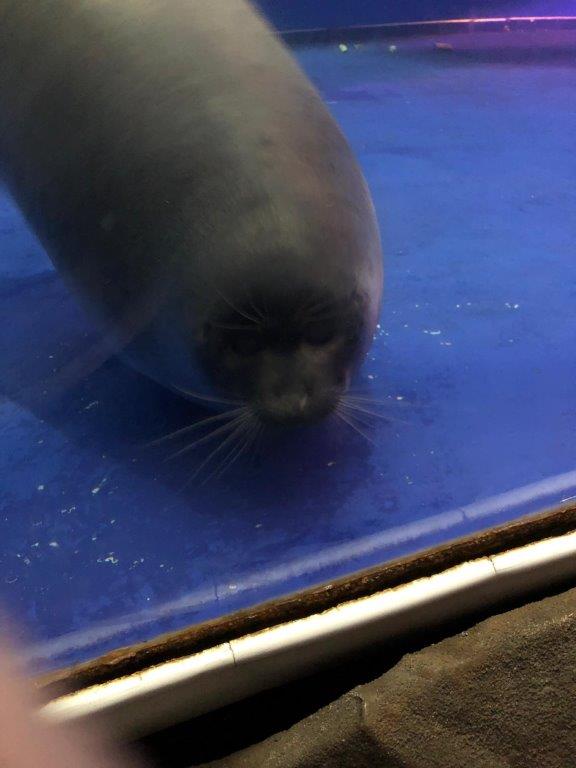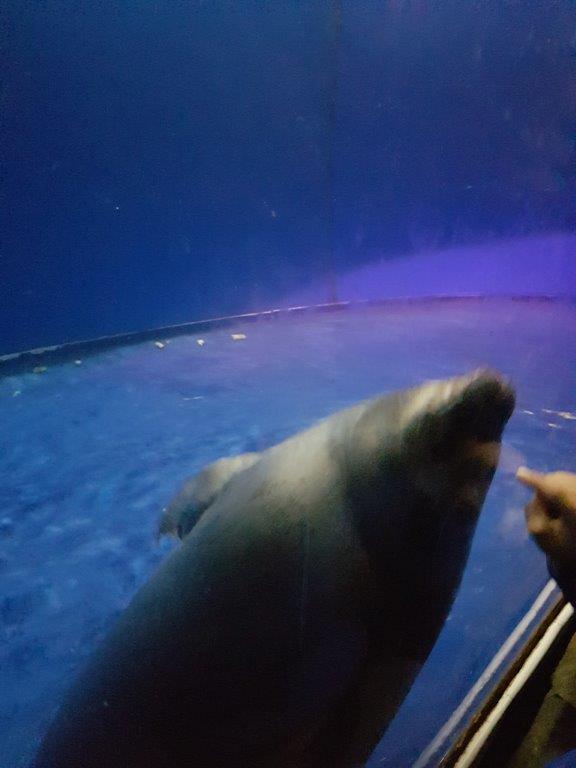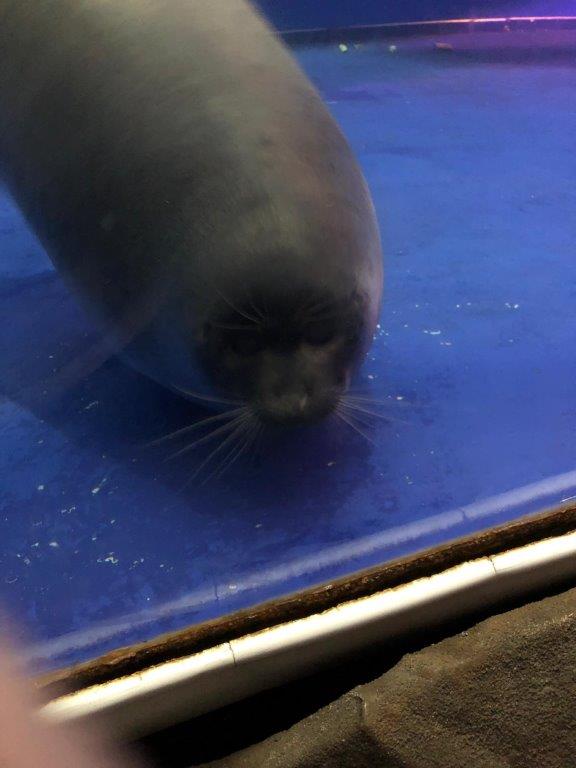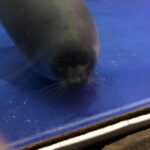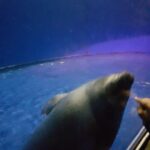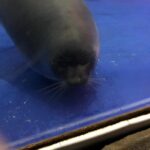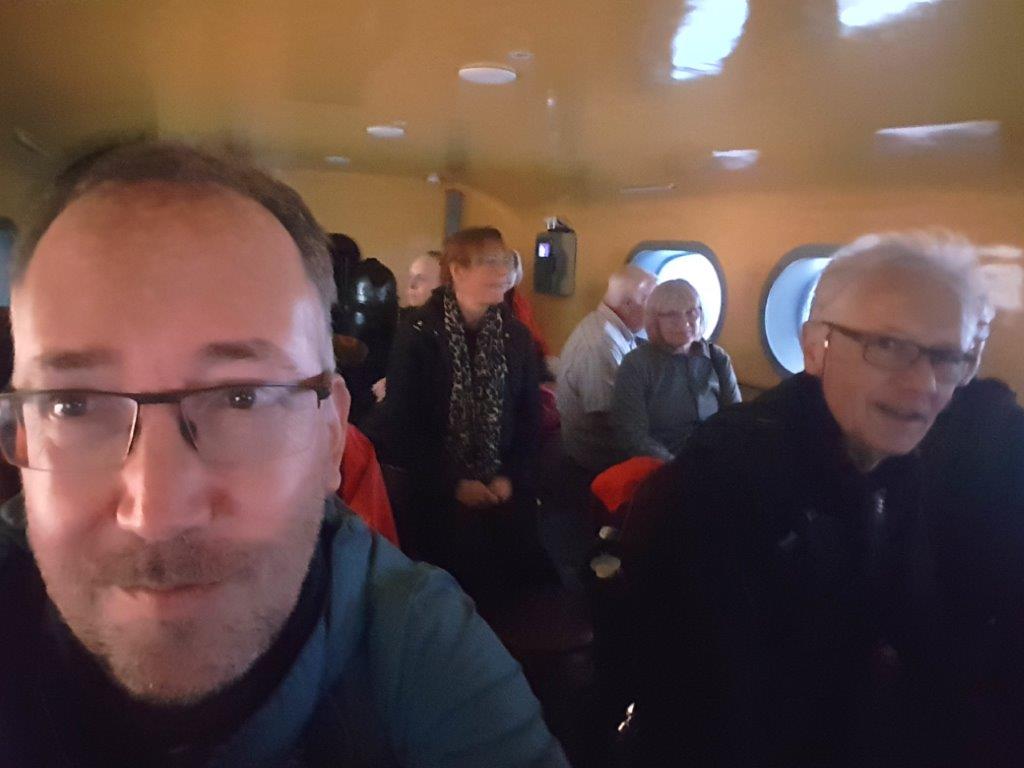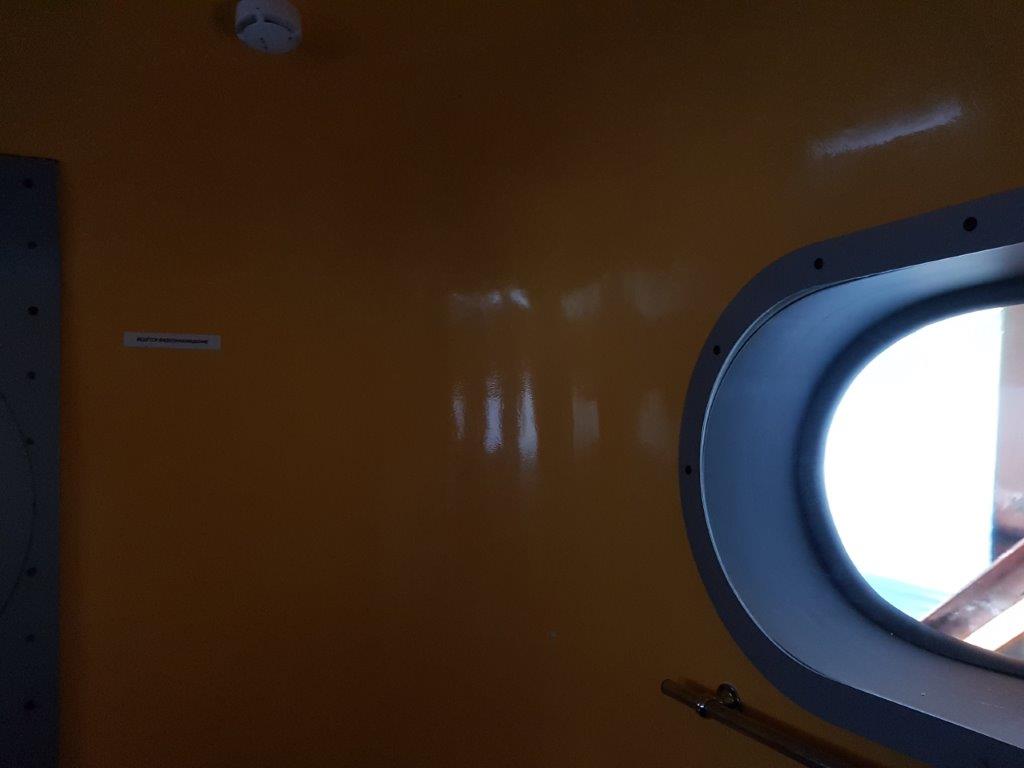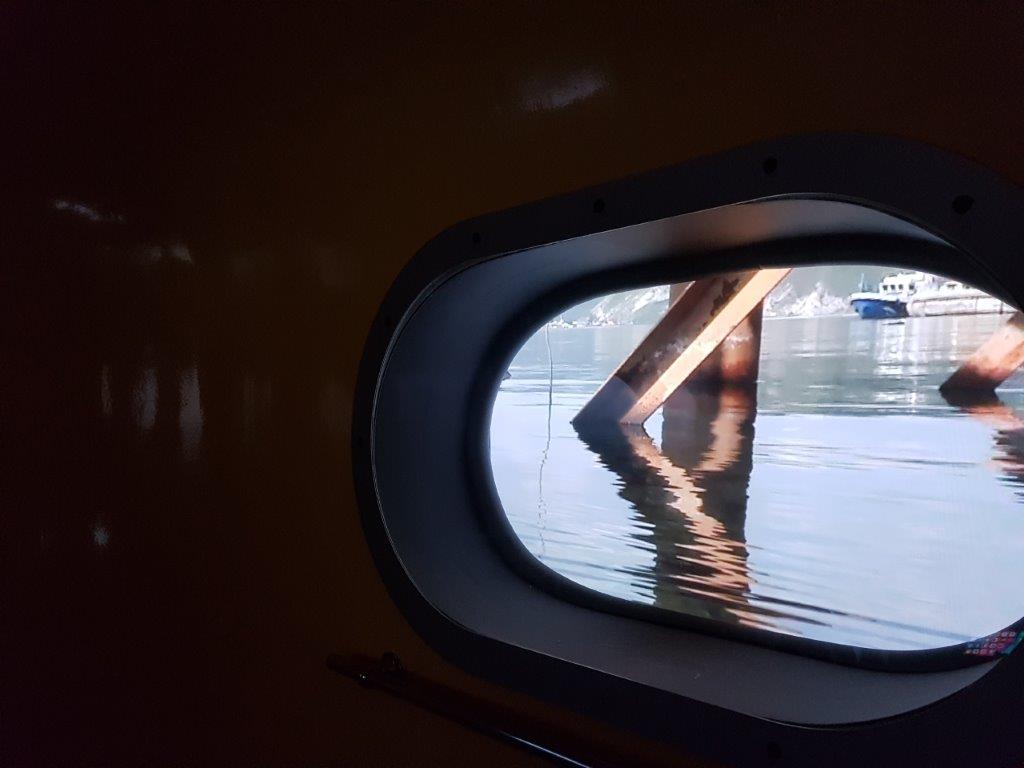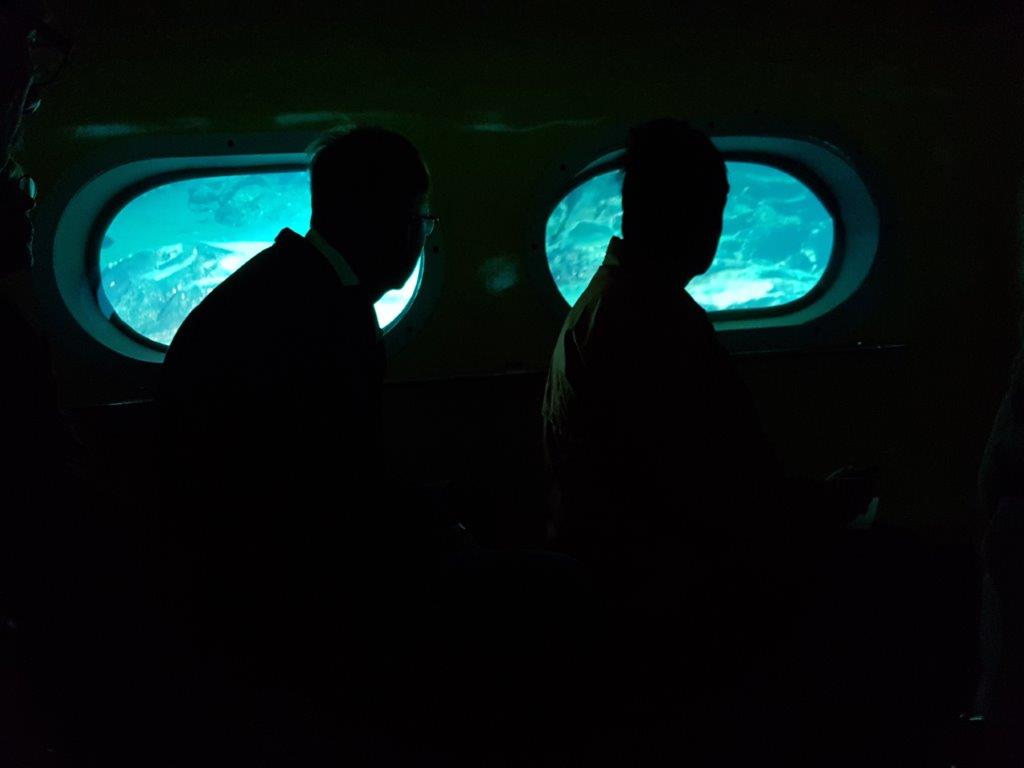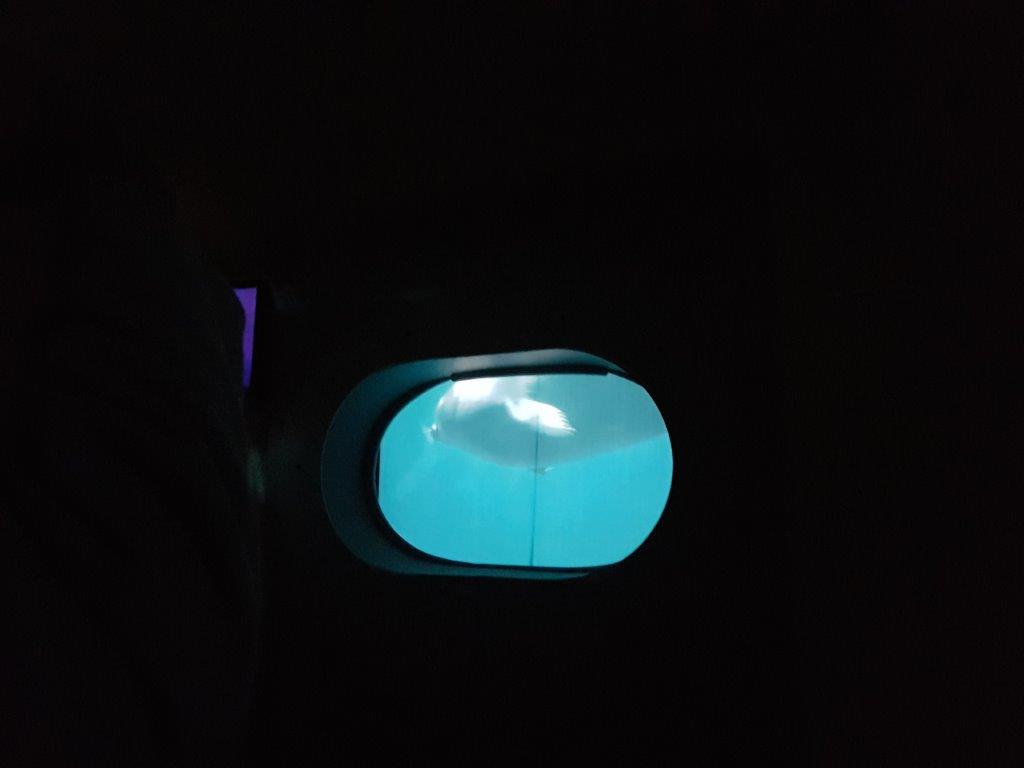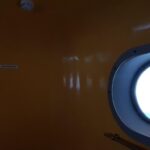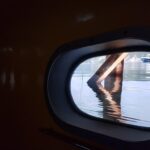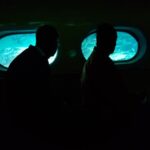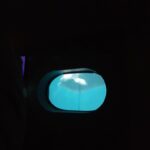Lake Baikal Museum (Pribaikalsky National Park/Lake Baikal – UNESCO World Heritage site)
Lake Baikal Museum
Next The Wandelgek visited the small but worthwhile Lake Baikal Museum to get some background information on the area where he was spending some days off the train. Without a guide that speaks your language (or English) it is difficult to understand the indepth story of Lake Baikal, but still there is lots to see, like pictures, maquettes/models, stuffed animals, real animals like fish and seals in basins and a virtual tour in a submarine to the bottom of Lake Baikal. Luckily The Wandelgek did have an English speaking guide and she explained more about the great lake.
Lake Baikal
The map below shows Lake Baikal and the basin of the River Angara.
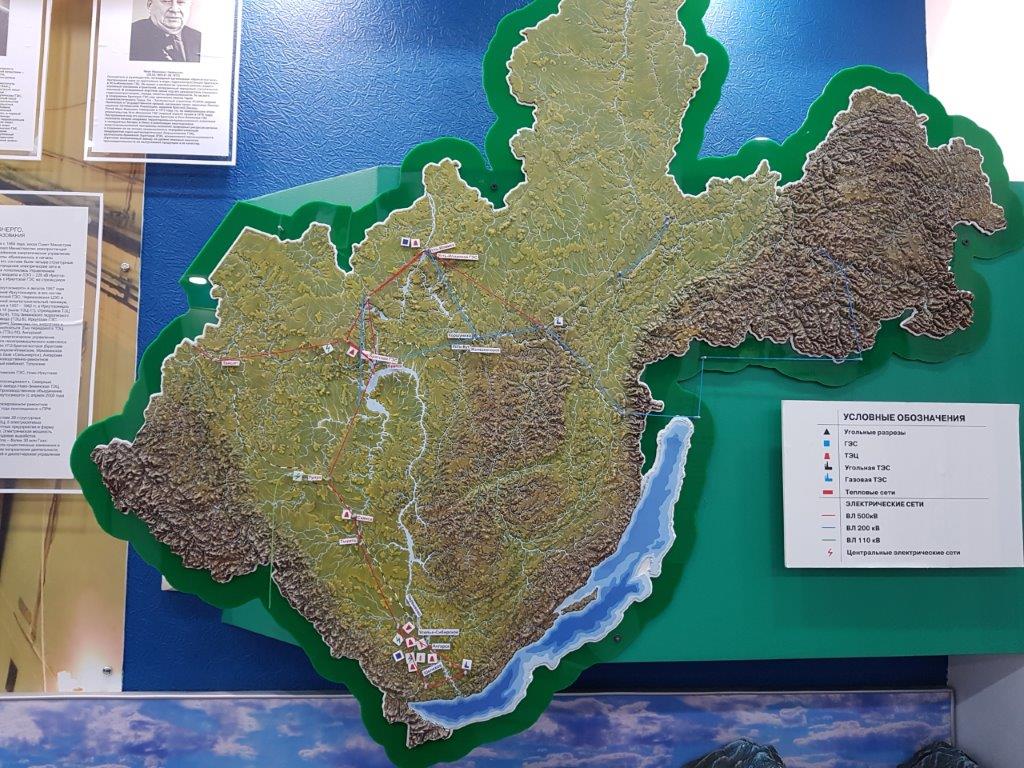 Lake Baikal is the largest freshwater lake by volume in the world, containing 22–23% of the world’s fresh surface water. With 23,615.39 km3 (5,670 cu mi) of fresh water, it contains more water than the North American Great Lakes combined. With a maximum depth of 1,642 m (5,387 ft), Baikal is the world’s deepest lake. In fact, the amount of fresh water that is held by this single lake is enough to provide the entire wold population with enough fresh water for over 50 years!
Lake Baikal is the largest freshwater lake by volume in the world, containing 22–23% of the world’s fresh surface water. With 23,615.39 km3 (5,670 cu mi) of fresh water, it contains more water than the North American Great Lakes combined. With a maximum depth of 1,642 m (5,387 ft), Baikal is the world’s deepest lake. In fact, the amount of fresh water that is held by this single lake is enough to provide the entire wold population with enough fresh water for over 50 years!
Beneath is a model which shows the gigantic depth of Lake Baikal, The River Angara, the hydro electricity dam just before Irkutsk and water levels. Of over 300 rivers that flow into Lake Baikal, The River Angara is the only one that flows out of the lake (at Litvijanka). The dam was the first
The next model shows a larger section of the Angara River and more dams downstream:
The next plexiglass maquette shows the huge volume of fresh water that Lake Baikal actually contains.
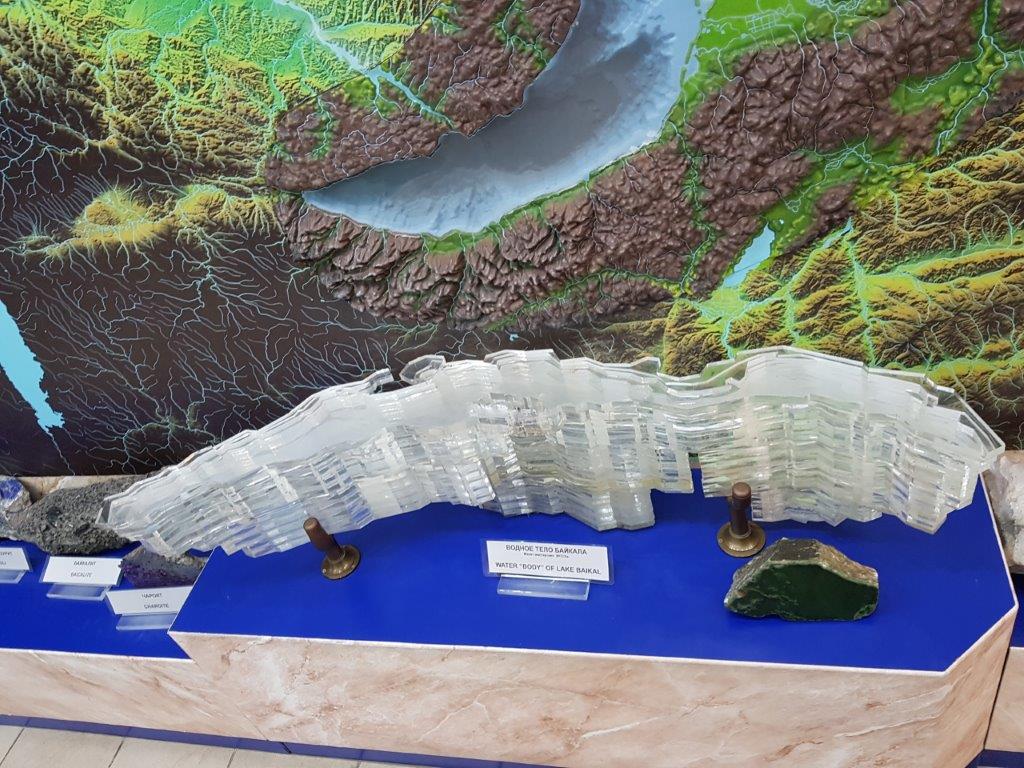 The next maquette shows that Lake Baikal is actually an underwater Grand Canyon. The area pointed at, is the deepest poart of the lake (which is actually part of a rift in the Earth’s crust) and it is 1,642 meters deep.
The next maquette shows that Lake Baikal is actually an underwater Grand Canyon. The area pointed at, is the deepest poart of the lake (which is actually part of a rift in the Earth’s crust) and it is 1,642 meters deep.
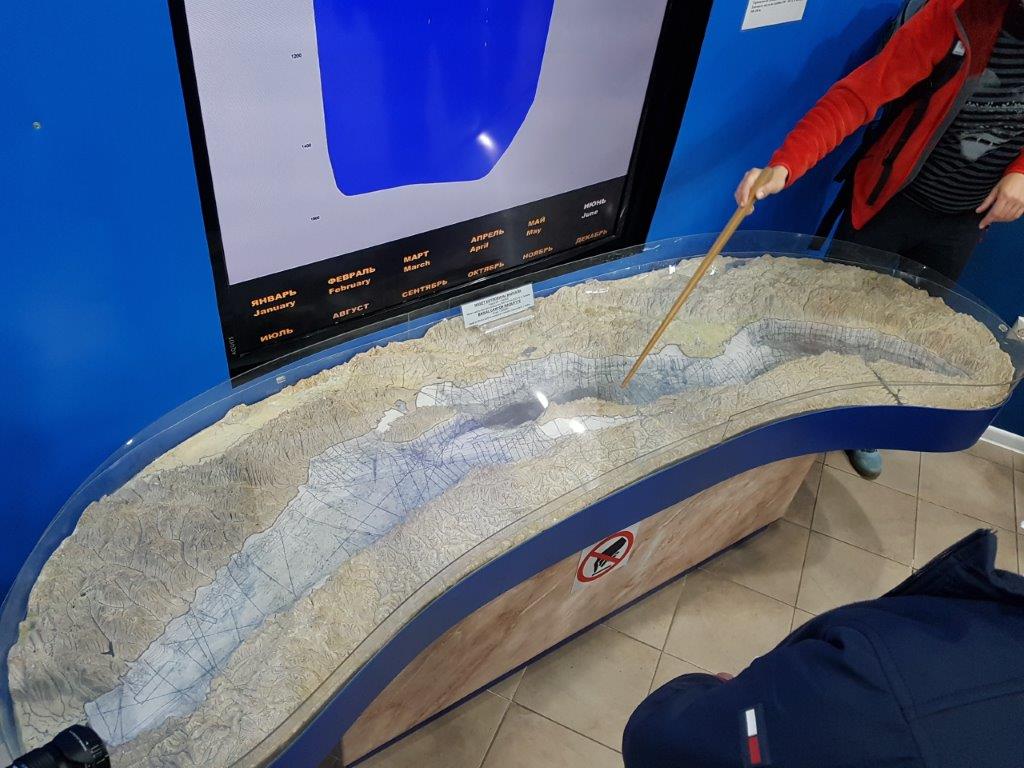 Indigenous animals
Indigenous animals
Themere volume of the lake’s water and its enclosing mountain chains, created a very special microclimate. Temperature and rainfall differ here from the average temperature and rainfall in Irkutsk which is just 60 km from the lake (warmer summer and cooler winter). For most of the year, the lake has clear skies , and long periods of rainy weather are relatively rare. October and November as well as April and the beginning of May are not recommended due to unstable weather conditions. The roads around the lake might be also blocked during this time.
Because of this microclimate and because of its relatively isolated location, the lake has developed an indigenous population of animals.
Nerpa seals
The Baikal seal, Lake Baikal seal or nerpa (Pusa sibirica), is a species of earless seal endemic to Lake Baikal in Siberia, Russia. Like the Caspian seal, it is related to the Arctic ringed seal. The Baikal seal is one of the smallest true seals and the only exclusively freshwater pinniped species. A subpopulation of inland harbour seals living in the Hudson’s Bay region of Quebec, Canada (Lacs des Loups Marins harbour seals), the Saimaa ringed seal (a ringed seal subspecies) and the Ladoga seal (a ringed seal subspecies) are found in fresh water, but these are part of species that also have marine populations.
Other animals that live around Lake Baikal are: Bears, rein deer, white tailed deer, elk, moose, musk deer, Siberian roe, wild boar, water rats, musk rats, roe deer, polecats, ground squirrels and field-voles.
A selection of fish swimming in Lake Baikal:
In a submarine to Lake Baikals floor at minus 1642 meters
It is of course a relatively large section of your time spend in a museum, if you only stay for a couple of hours or for 1 day at Lake Baikal, but then again, the museum isn’t large and it gives you just enough background info (remember, only in Russian texts, but there is a lot to look at which explains itself) on what it actually is you’re looking at, when enjoying the view over Lake Baikal.
More of that in my upcoming blogpost.

